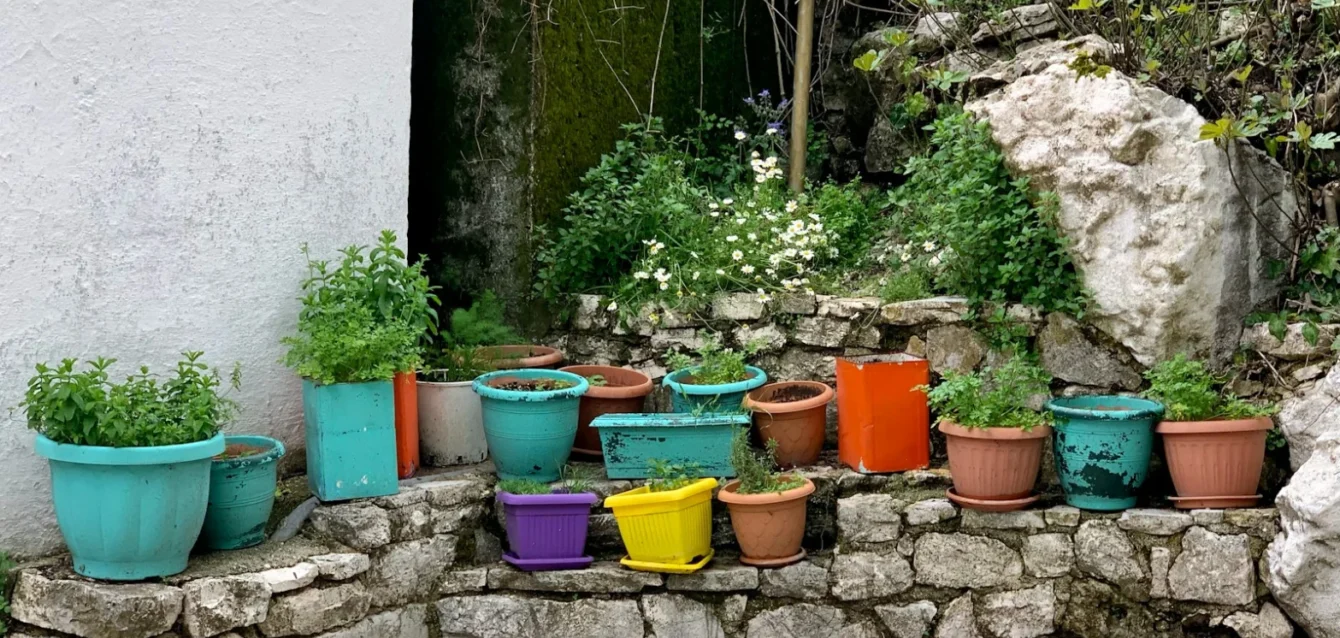This article is a sample portfolio piece created for presentation purposes. It serves exclusively to demonstrate style, structure, and editorial capabilities and may not represent a final, fully optimized, or updated version. If you are interested in professionally crafted articles, localization, or optimized content for your media or brand, contact us through the form or create an order, and we will be happy to prepare a custom solution for you.
Each of our articles is created through a combination of editorial experience, professional knowledge, and modern technologies. At the outset, we clearly define the brief – the topic, target audience, tone of communication, SEO keywords, and required length. We then conduct research using retrieval-based augmented generation (RAG) and verified sources, with AI helping us accelerate data collection, though we manually verify its accuracy. In the next step, we create a logical text structure, strategically place keywords, and adapt the language to the target audience. The finished content undergoes multi-stage linguistic, stylistic, and factual review, including SEO optimization and verification of E-E-A-T signals. When appropriate, we supplement the article with photographs, links, or graphics that enhance its attractiveness and comprehensibility. The final text combines AI assistance with human expertise and enables effective scaling while maintaining high quality.
Summary. Container plants fail when gardeners treat them like in-ground gardens, but success comes from recognizing that pots create a completely different growing environment where moisture, temperature, and nutrients change much faster. The fix isn’t complicated – use actual potting mix instead of dirt, make sure water can escape through multiple drainage holes, and feed plants every few weeks since containers flush out nutrients quickly. Light-colored pots in sizes of at least 12 inches prevent the heat stress and root crowding that kill plants even when everything else seems right.
You water faithfully, choose beautiful containers, and start with healthy plants—yet something still goes wrong. Container gardening should be simple, but many home gardeners face frustrating setbacks like wilting leaves, stunted growth, or plants that simply refuse to thrive. The good news is that common container gardening problems and how to solve them follow predictable patterns, and once you understand what’s happening beneath the surface, you can turn struggling plants into thriving ones.
The most common container gardening problems include poor drainage causing root rot, using the wrong soil type, containers that are too small, inconsistent watering, nutrient depletion, and overcrowding. Most issues stem from limited soil volume and can be prevented with proper container selection, quality potting mix, and regular maintenance.
Unlike plants growing in the ground, container plants rely entirely on you for water, nutrients, and proper growing conditions. The confined space creates unique challenges, but these problems are predictable, preventable, and fixable with the right knowledge. This guide walks you through the most common container gardening problems you’ll encounter, how to diagnose what’s really happening with your plants, and practical solutions that work—whether you’re growing vegetables, herbs, or flowers. You’ll learn to spot warning signs early and create thriving container gardens that produce abundantly all season long.
Watering Woes: When Your Container Plants Are Too Wet or Too Dry
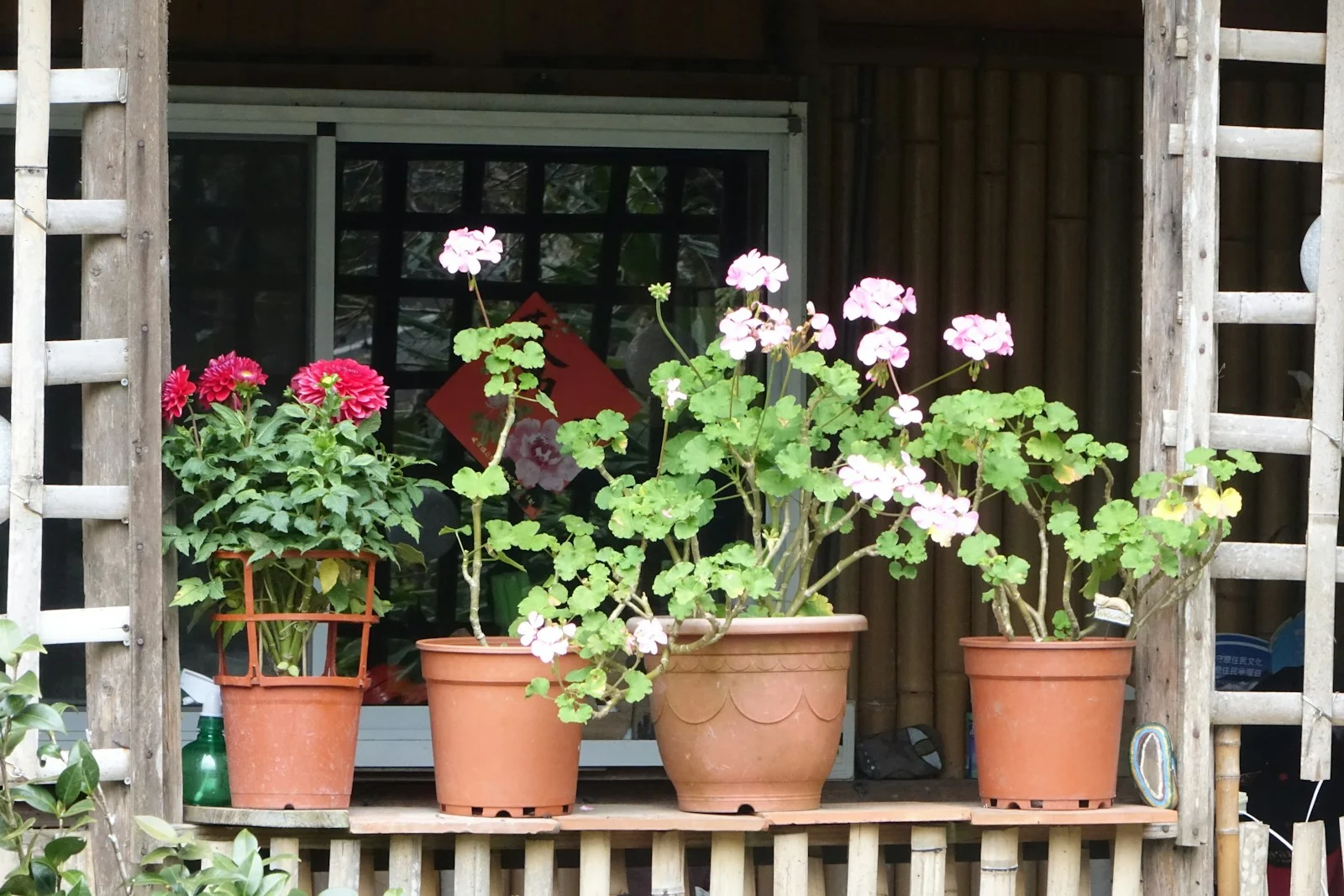
The Paradox of Wilting Leaves
Container plants wilt for opposite reasons—both overwatering and underwatering cause drooping, yellowing leaves. This confuses gardeners who add more water when the real problem is root rot from soggy soil. Learning to diagnose the difference saves plants and prevents wasted effort on solutions that make things worse.
Here’s how to tell what’s really happening:
- Underwatered plants show soil pulling away from container edges, feel bone-dry several inches down, and display leaves that are crispy and brown at the edges
- Overwatered plants have soil that stays wet and soggy, roots that appear brown and mushy, leaves that are yellow and soft, and often give off a musty smell
The touch test gives you the answer every time. Insert your finger 2-3 inches into the soil—if it feels dry at that depth, water thoroughly until it runs out the drainage holes. If it’s still moist, wait another day and check again. This simple habit prevents both extremes and keeps your plants in the sweet spot they need to thrive.
Why Containers Dry Out Faster Than Garden Beds
Container soil loses moisture rapidly through evaporation from all sides—not just the top surface like garden beds. Terracotta and unglazed ceramic pots are especially porous, drying out even faster than plastic containers. During hot summer weather, small containers may need watering twice daily, which catches many gardeners off guard. The smaller the container, the faster it dries, and dark-colored pots heat up quickly in the sun, accelerating water loss even more.
Solutions that work include choosing larger containers (at least 12 inches wide and deep) to hold more soil and moisture, which gives you a bigger buffer between waterings. Add a layer of mulch to the soil surface to slow evaporation—bark chips, straw, or even grass clippings work beautifully. Group containers together to create humid microclimates where plants shelter each other from drying winds. Use saucers underneath to catch excess water, but never let pots sit in standing water for more than 30 minutes, or you’ll create the opposite problem.
A distinctive tip that makes a real difference: water in the early morning rather than midday or evening. Morning watering allows plants to absorb moisture before the heat of the day, and any excess evaporates naturally. Evening watering can leave soil damp overnight, inviting fungal diseases. If you must water during the day, water deeply and less often rather than giving shallow, frequent drinks—this encourages roots to grow deeper and makes plants more drought-resistant over time.
The White Crust Problem: Mineral and Salt Buildup
If you notice a white, crusty substance on your soil surface or pot rims, that’s mineral and salt accumulation from fertilizer and hard water. Over time, these deposits damage roots, prevent water absorption, and stunt growth. Many gardeners mistake this for mold or disease, but it’s actually a buildup that needs to be flushed out.
Fix it by scraping off the white crust from the soil surface first. Then leach the soil by watering thoroughly until water runs freely through drainage holes—use about twice the container volume to flush salts downward and out. Top-dress with fresh potting mix after removing the crusty layer, which gives roots a clean zone to grow into. Repeat this leaching process every six months to prevent buildup from returning, especially if you use synthetic fertilizers or have hard tap water.
Long-Term Solution: Self-Watering Containers
Self-watering or sub-irrigated planters with built-in water reservoirs eliminate guessing games entirely. Plants draw moisture through wicking action as needed, preventing both overwatering and underwatering without you having to monitor constantly. These systems are ideal for beginners, busy gardeners, or anyone growing thirsty crops like tomatoes and cucumbers that demand consistent moisture.
The reservoir sits below the soil level, and a wicking system pulls water upward as the soil dries out. You fill the reservoir every few days instead of watering from the top, and an overflow hole prevents waterlogging. Many gardeners find their plants grow faster and produce more abundantly in self-watering containers because the moisture stays perfectly consistent—no feast-or-famine cycles that stress plants and reduce yields.
Soil and Root Problems That Sabotage Container Success
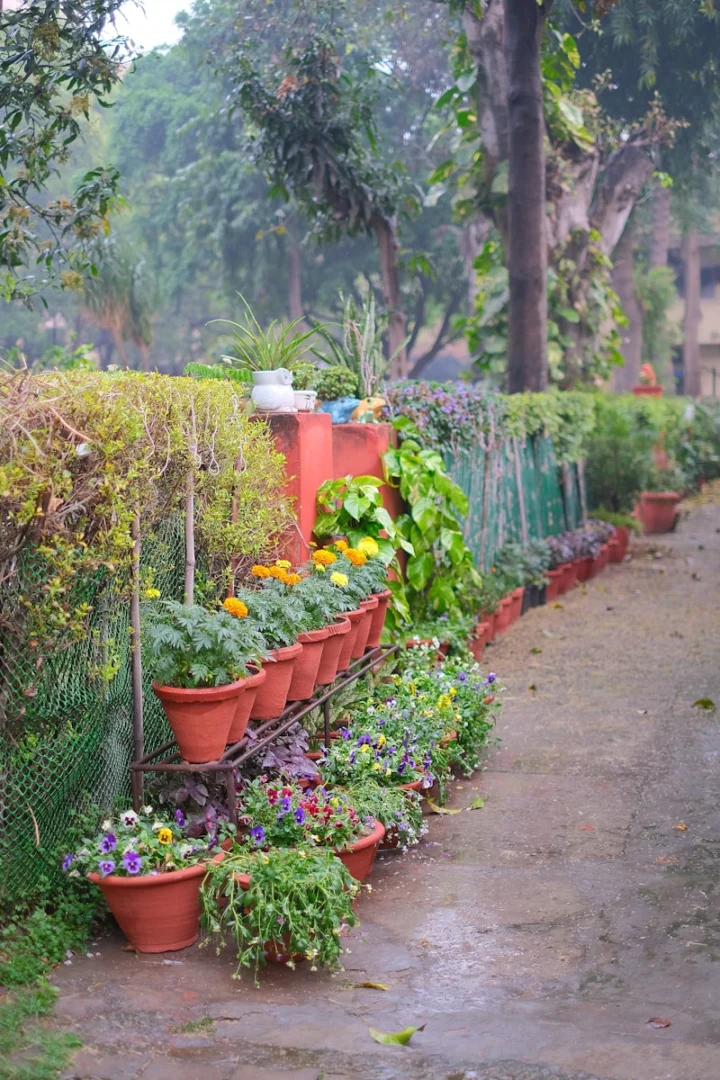
Using Garden Soil Instead of Potting Mix
One of the most common container gardening problems is filling pots with garden soil or topsoil instead of proper potting mix. Garden soil is too dense and heavy for containers—it compacts easily, drains poorly, and suffocates roots that need air as much as they need water. Even good garden soil becomes rock-hard in containers, creating an environment where roots can’t breathe or spread properly.
Potting mixes are specially formulated with peat moss, coconut coir, perlite, and vermiculite to provide aeration, drainage, and moisture retention all at once. These lightweight ingredients prevent compaction and create air pockets that roots need to breathe. Quality potting mix feels fluffy and light when you squeeze it, holds moisture without becoming waterlogged, and stays loose throughout the growing season. The bottom line is simple: always use quality potting mix for containers, and never dig up soil from your yard no matter how good it looks.
The Drainage Layer Myth—And What Actually Works
For decades, gardeners placed rocks, gravel, or broken pottery at the bottom of containers believing it improved drainage. Research now shows this actually creates a “perched water table” that keeps soil waterlogged longer rather than helping water escape. The science is straightforward: water moves from wet soil to dry soil, and adding a coarse layer at the bottom doesn’t help water escape—it just takes up valuable root space and creates a zone where water sits.
What works instead:
- Multiple drainage holes (at least 1/2 to 3/4 inches diameter) in the container bottom so water can exit freely
- Elevate containers on pot feet or bricks so water flows freely out rather than pooling underneath
- Well-draining potting mix with perlite or vermiculite mixed throughout, not a separate layer
- Coffee filters over large holes prevent soil from washing out without blocking drainage
This myth persists because it sounds logical, but understanding the real physics of water movement saves you from wasted effort. Fill containers completely with good potting mix, make sure drainage holes are clear and adequate, and let gravity do the rest.
Root-Bound Plants and Container Size Mistakes
Plants outgrow their containers when roots circle the pot’s interior, becoming tangled and compacted into a solid mass. Root-bound plants dry out quickly, wilt frequently even after watering, absorb fewer nutrients, and stop growing no matter how much you fertilize. You’re essentially asking the plant to live in a space that’s become too small, like wearing shoes two sizes too tight.
Warning signs include roots growing out of drainage holes in thick mats, plants that dry out within 24 hours after thorough watering, stunted growth despite adequate water and fertilizer, and more roots than soil visible when you lift the plant out. If you see these symptoms, it’s time to repot immediately before permanent damage occurs.
Repot into a container 2-4 inches wider than the current pot to give roots room to expand. Gently tease apart circled roots with your fingers or slice through them with clean shears to encourage outward growth instead of continued circling. Refresh the soil completely with fresh potting mix, which provides new nutrients and better structure. Plants often show dramatic improvement within a week of proper repotting, with new growth appearing and color returning to leaves.
Container Heat Stress—The Problem Nobody Talks About
Black plastic containers in full sun can reach soil temperatures exceeding 120-130 degrees Fahrenheit near the container walls. These temperatures directly injure roots and stress plants even with adequate water, causing unexplained wilting and poor growth that persists no matter what else you fix. Most gardeners never consider soil temperature as a problem, but it’s often the hidden culprit behind mysterious plant decline.
Solutions include choosing light-colored containers that reflect heat instead of absorbing it—white, tan, or light gray containers stay much cooler than black or dark brown ones. Shade containers during peak afternoon sun or move them temporarily to shadier spots during heat waves. Bury containers partially in the ground or group them together for mutual shading, which keeps the soil mass cooler. Use insulated containers or double-pot by placing one pot inside another with air space between, creating an insulation barrier that protects roots from temperature extremes.
When to Refresh and Replace Container Soil
Potting mix breaks down and loses structure over time, becoming compacted and nutrient-depleted as organic materials decompose. Most container plants need soil refreshed every 12-18 months to maintain healthy growing conditions. Without this refresh, even the best care won’t produce good results because the growing medium itself has degraded beyond repair.
Signs it’s time to refresh include soil level dropping several inches below the pot rim as organic matter breaks down, water running straight through without absorbing because the structure has collapsed, white mineral crust appearing on the soil surface from salt buildup, and plants that aren’t thriving despite proper care. When you see these signs, don’t just add fertilizer—replace or refresh the soil completely to give plants a true fresh start.
Growing Conditions That Stunt Container Plants
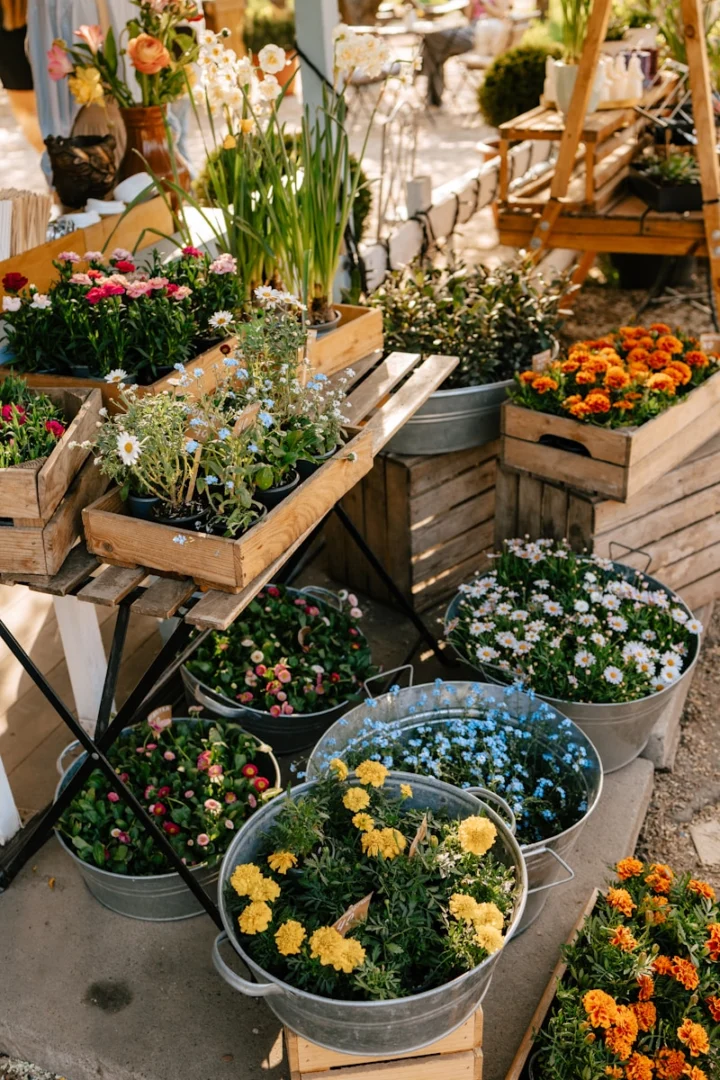
Nutrient Starvation in Container Gardens
Unlike in-ground plants, container plants can’t reach beyond their pots for nutrients when supplies run low. Frequent watering leaches nutrients from the potting mix faster than they’re replenished, carrying dissolved minerals right out through the drainage holes. Within 3-6 weeks, even nutrient-rich potting mix becomes depleted, leaving plants hungry no matter how good your watering habits are.
Symptoms of nutrient deficiency appear gradually:
- Lower leaves turning yellow (classic nitrogen deficiency)
- Pale, washed-out foliage across the whole plant
- Stunted growth and weak stems that can’t support themselves
- Poor flowering or fruiting despite adequate sunlight and water
Fertilizing solutions depend on your schedule and preferences. Liquid fertilizers applied every two weeks or at half-strength weekly provide steady nutrition that fast-growing plants appreciate. Slow-release granules mixed into soil at planting time feed plants for 3-4 months without additional applications, perfect for busy gardeners. Compost top-dressing adds natural, steady nutrition while improving soil structure, appealing to organic gardeners who want gentle, sustainable feeding.
A distinctive tip that transforms container success: combine feeding methods rather than relying on just one. Mix slow-release granules into potting mix at planting, then supplement with liquid fertilizer during peak growth periods. This gives plants a steady baseline of nutrition plus extra boosts when they need it most. Watch for new growth and deeper green color as signs that your feeding program is working—plants should look vibrant and energetic, not pale and struggling.
Planting the Wrong Crops at the Wrong Time
Container soil heats and cools faster than garden beds because it lacks the insulating mass of surrounding earth. Cool-season crops like lettuce, spinach, and peas bolt quickly when planted in late spring—container soil gets too warm for their roots even if air temperatures seem reasonable. Conversely, heat-loving tomatoes and peppers planted too early in spring suffer stunted growth from cold soil that refuses to warm up in a small container.
Timing matters more in containers than in-ground gardens. Plant cool-season crops in early spring or fall when temperatures stay below 75 degrees Fahrenheit, giving them the cool roots they need to produce tender leaves. Grow warm-season vegetables in late spring through summer when soil stays consistently above 60 degrees, ensuring strong growth and good yields. Use a soil thermometer to check actual soil temperature rather than guessing—this simple tool prevents costly planting mistakes.
Overcrowding Leads to Competition and Disease
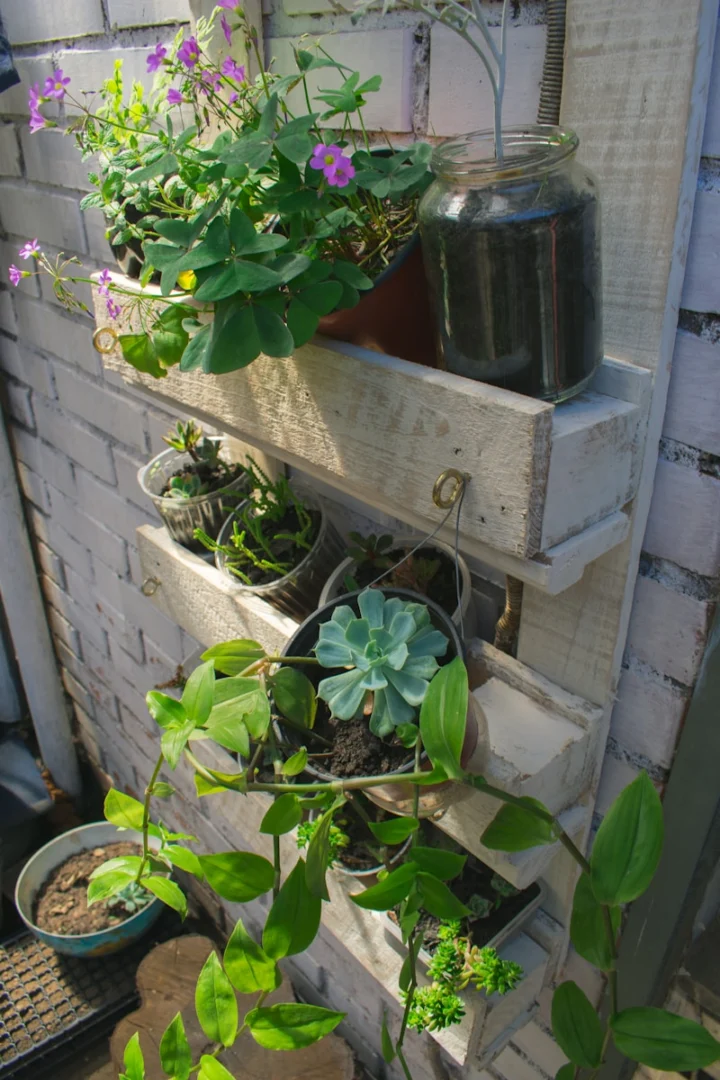
Cramming too many plants into one container creates fierce competition for water, nutrients, and light that nobody can win. Overcrowded plants also trap humidity and reduce air circulation—perfect conditions for fungal diseases like powdery mildew that spread rapidly in still, damp conditions. What looks lush and full at planting becomes a tangled mess of weak, disease-prone plants by mid-season.
Proper spacing prevents these problems:
- One large plant like a tomato, pepper, or eggplant per 5-10 gallon container gives roots the space they need
- Follow seed packet spacing guidelines even in containers—those recommendations aren’t just for garden beds
- Leave 2-3 inches between plants in mixed containers so air can circulate and each plant gets adequate light
When in doubt, plant fewer plants than you think you should. A single healthy, well-spaced plant produces more than three overcrowded, competing plants ever will. The temptation to pack containers full fades quickly when you see how much better properly spaced plants perform throughout the season.
Conclusion
Common container gardening problems don’t have to derail your growing season—most issues come down to water management, proper soil selection, adequate container size, and giving plants room to breathe. With these foundations in place, you’ll avoid the frustrations that stop many gardeners and enjoy the real rewards container gardening offers.
Start with proper drainage by ensuring multiple holes, quality potting mix, and elevated containers that prevent root rot. Size up to containers at least 12 inches deep and wide enough for mature plant size, which eliminates many problems before they start. Feed regularly because container plants need fertilizer every 2-4 weeks once nutrients deplete from frequent watering. Refresh soil annually by replacing or replenishing potting mix every 12-18 months to maintain structure and fertility. Water by feel—check soil moisture 2-3 inches down before watering rather than relying on the surface, which dries out first.
Start with one or two larger containers, invest in quality potting mix, and choose plants suited to your growing conditions. With these foundations in place, you’ll grow thriving, productive container gardens that reward you all season long.
Frequently Asked Questions About Common Container Gardening Problems and How to Solve Them
1. How can I tell if my container plant is overwatered or underwatered?
Check the soil 2-3 inches deep with your finger—if it’s bone-dry and pulling away from the pot edges, you’re underwatering. If the soil feels soggy, roots look brown and mushy, and there’s a musty smell, you’re overwatering. Underwatered plants have crispy, brown leaf edges, while overwatered plants show yellow, soft leaves and wilting even when soil is wet.
2. Can I use regular garden soil in my containers instead of potting mix?
No, regular garden soil is too heavy and dense for containers—it compacts easily and suffocates roots. Always use potting mix, which contains peat moss, perlite, and vermiculite to create the light, airy structure container plants need to breathe and drain properly. Garden soil might look great in the ground, but it becomes rock-hard in pots and prevents healthy root growth.
3. Why do my container plants keep dying even though I water them regularly?
Your containers might lack proper drainage holes, or you could be experiencing heat stress if you’re using dark-colored pots in full sun. Black plastic containers can reach 120-130 degrees Fahrenheit, literally cooking plant roots even when you water correctly. Make sure your containers have multiple drainage holes at least 1/2 inch wide, and consider switching to light-colored pots that reflect heat instead of absorbing it.
4. How often should I replace the soil in my containers?
Most container plants need fresh potting mix every 12-18 months because the soil breaks down, compacts, and loses nutrients over time. You’ll know it’s time when the soil level drops several inches, water runs straight through without absorbing, or plants stop thriving despite proper care. Refreshing your soil gives roots the structure and nutrition they need for another successful growing season—it’s one of the easiest ways to transform struggling plants into productive ones.
External Sources Used
- Earthbox.com – “7 Container Gardening Mistakes & How to Avoid Them” (October 2025). Available at: https://earthbox.com/blog/7-container-gardening-mistakes
- Extension University of Illinois – “Container Drainage Options | Container Gardens” (2016). Available at: https://extension.illinois.edu/container-gardens/container-drainage-options
- Extension University of Minnesota – “Fertilizing and Watering Container Plants” (2024). Available at: https://extension.umn.edu/managing-soil-and-nutrients/fertilizing-and-watering-container-plants
- Gardening Know How – “6 Bad Container Gardening Habits You Need To Ditch” (August 2025). Available at: https://www.gardeningknowhow.com/special/containers/bad-container-gardening-habits
- Gardening Know How – “Fertilizing Outdoor Container Plants – How To Feed Potted Plants” (November 2022). Available at: https://www.gardeningknowhow.com/special/containers/feeding-potted-garden-plants.htm
- Melinda Myers – “Managing Salt Buildup (White Crusty Substance) on Houseplant Soil” (2024). Available at: https://www.melindamyers.com/audio-video/melindas-garden-moment-audio-tips/houseplants-holiday-plants-cut-flowers/managing-salt-buildup-white-crusty-substance-on-houseplant-soil
- Pennington Seed – “Why Plant Leaves Turn Yellow and How to Fix Them” (October 2025). Available at: https://www.pennington.com/all-products/fertilizer/resources/why-plant-leaves-turn-yellow-and-how-to-fix-them
- Rural Sprout – “Tired of Small Yields With Container Gardening? We Can Help” (February 2023). Available at: https://www.ruralsprout.com/fix-container-gardening/
- UC Master Gardeners Santa Clara County – “Container Gardening Basics” (July 2025). Available at: https://ucanr.edu/site/uc-master-gardeners-santa-clara-county/container-gardening-basics
- UC Master Gardeners Santa Clara County – “Drainage in Containers” (July 2025). Available at: https://ucanr.edu/site/uc-master-gardeners-santa-clara-county/drainage-containers
- University of California Agriculture and Natural Resources – “Caring for Container Plants During Heatwaves” (March 2025). Available at: https://ucanr.edu/blog/under-solano-sun/article/caring-container-plants-during-heatwaves
- University of Kentucky Cooperative Extension – “Reducing Heat Stress to Container-Grown Plants” (HO-119). Available at: https://publications.mgcafe.uky.edu/files/HO119.pdf
- University of Kentucky Cooperative Extension – “Wicking Containers: A Self-Watering Garden System” (AEN-157). Available at: https://publications.mgcafe.uky.edu/files/AEN157.pdf
- University of Maryland Extension – “Types of Containers for Growing Vegetables” (February 2023). Available at: https://extension.umd.edu/resource/types-containers-growing-vegetables


